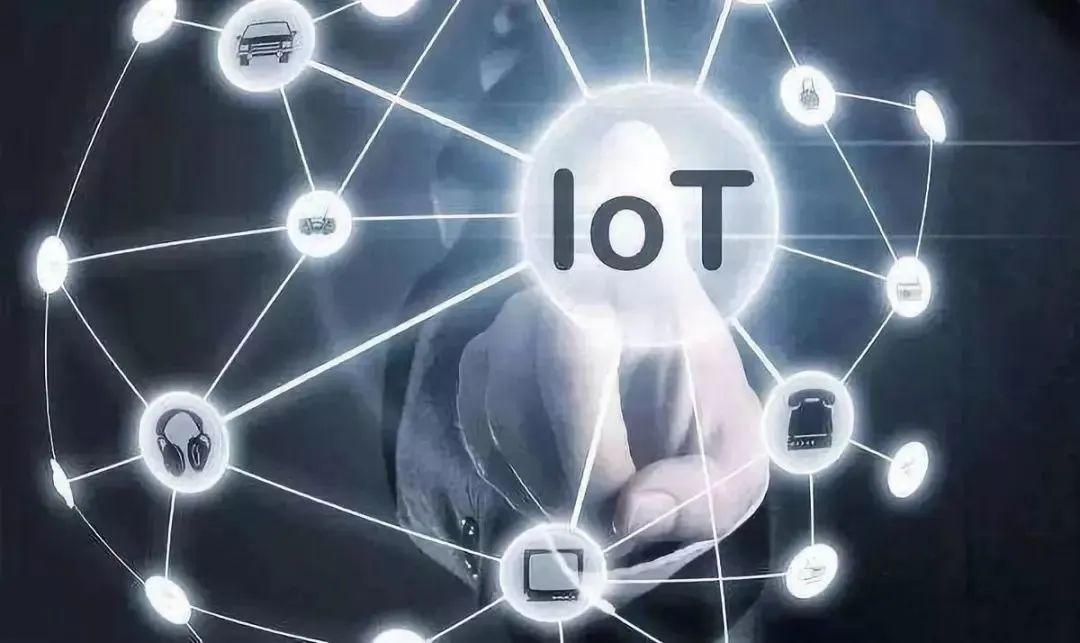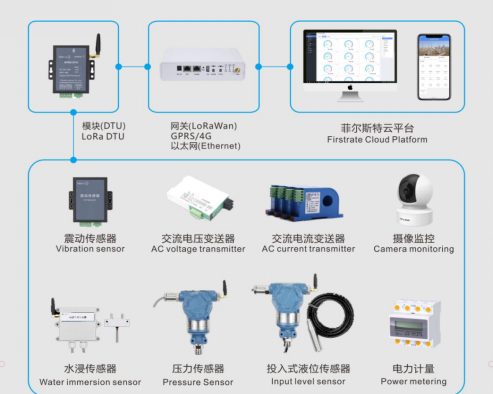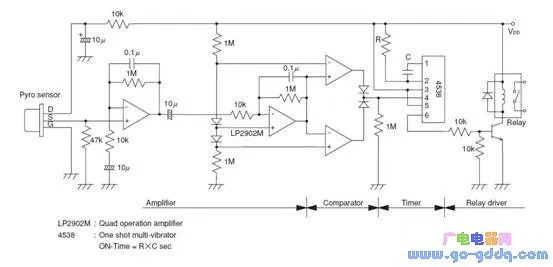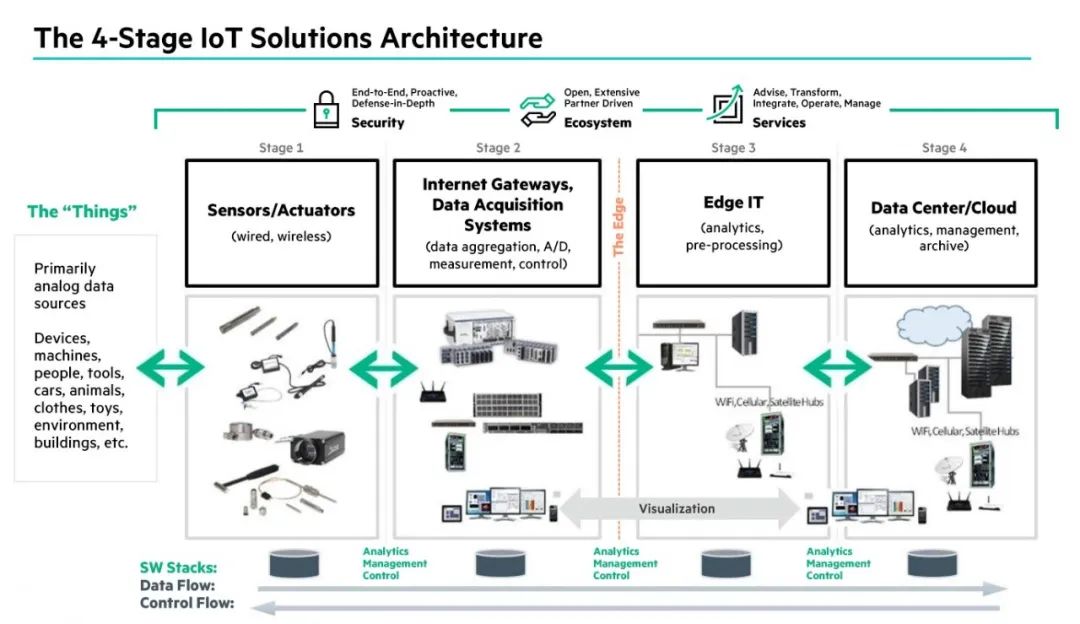Click the blue text to follow us
Recently, the Ministry of Industry and Information Technology, in conjunction with the Central Cybersecurity and Informatization Committee Office and other departments, issued the “Three-Year Action Plan for the Construction of New IoT Infrastructure (2021-2023).” The “14th Five-Year Plan” period is a critical period for the development of new IoT infrastructure, and the action plan emphasizes the goal of supporting the construction of a manufacturing powerhouse and a cyber power, building IoT access capabilities that support the integration of fixed and mobile networks and the combination of wide and narrow, and accelerating the promotion of comprehensive perception, ubiquitous connectivity, and secure and trustworthy new IoT infrastructure.
—- Materials from the “Action Plan” Interpretation
With the rapid development of the Internet, it has become closely related to our lives. The era of the Internet of Things (IoT), where everything is interconnected, is rapidly advancing towards the future. It not only integrates into various aspects of life but is also promoted for development by the State Council.
So why has the IoT become
the mainstream of development in the Internet era?
This brings us to IoT sensors. IoT sensors come in various forms and sizes, and sensors are everywhere in homes, workplaces, shopping centers, and hospitals. Although the types, uses, and demands for sensors are constantly changing, in most cases, their costs and complexities are significantly decreasing, greatly easing the development difficulty for developers. Sensors are devices that can detect and respond to environmental changes, with inputs from various sources such as light, temperature, motion, and pressure. If connected to the network, sensors can share perceived data with other connected devices and management systems.

Sensors fall into ten categories, and engineers need to pay attention to five essential elements when selecting them. The following discusses sensor selection considerations based on sensor categories, features, and application scenarios.
5 Essential Points for Choosing IoT Sensors
Cost
Return on investment is a crucial factor in whether an IoT project can be launched. Factors such as reusability, maintainability, and the costs of deploying IoT devices and sensors are combinations of cost factors.
Accuracy
Like other conventional devices, the accuracy of IoT devices or sensors is essential for ensuring efficient use of devices in specific locations. Sensors should be able to accurately track and obtain the required information. For example, a biotechnology company may have high accuracy requirements for sensors that collect real-time temperature/status data when closely monitoring temperature-sensitive biomedical materials.
Security
Before connecting devices or sensors to the network, security is one of the first factors to consider. Whether sensors could become entry points for hacker attacks and whether sensor failures could lead to device paralysis are security factors for sensors.
Longevity
Most IoT devices require long-term deployment and remote maintenance. When selecting sensors, one should fully consider the aging of components over time in a changing environment.
Connectivity
In the IoT ecosystem, connectivity is a crucial component. IoT networks use various communication protocols, including short-range wireless protocols such as ZigBee, Bluetooth, and Wi-Fi, mobile networks, and long-range wireless protocols such as LoRa and NFC. IoT devices and sensors must be able to connect and support these communication protocols.


Ten Categories of Mainstream IoT Sensors
Accelerometer
1
Primarily detects the static or dynamic acceleration of objects. In automotive applications, accelerometers are responsible for deploying airbags after a collision, serving as life-saving sensors in dangerous situations. They can also be used for anti-theft protection, alerting the system when a stationary object suddenly moves.
Gyroscope
2
Gyroscopes are commonly used in navigation environments and are key components in aircraft, space stations, motorcycles, and ships. They measure rotation or maintain direction, capable of measuring an object’s angular rate or speed. In automobiles, gyroscopes can be used for navigation and electronic stability control systems. Other use cases include motion sensing in video games and camera shake detection.
In practical applications, gyroscopes and accelerometers are often used together. For example, the sensor that can detect whether a smartphone is upright or in landscape mode is a gyroscope-accelerometer sensor, and most accelerometer chips come with a gyroscope.

The main difference between gyroscopes and accelerometers is that a gyroscope is a device that uses Earth’s gravity to determine the direction of an object. Gyroscopes can be divided into sensor gyroscopes and indicating gyroscopes based on their uses. Sensor gyroscopes are used in automatic control systems for flying objects, serving as sensors for horizontal, vertical, pitch, heading, and angular velocity. Indicating gyroscopes are primarily used for flight status indication, serving as instruments for navigation and piloting. Accelerometers are compact sensors used to measure non-gravitational acceleration. When the object they are integrated with goes from rest to gaining speed, the accelerometer responds to vibrations related to that motion. In IoT, accelerometers are core to vibration sensors, converting acceleration data into vibration frequency (i.e., converting g to Hz).
Typical gyroscope sensors achieve 6-axis motion processing with 3-axis gyroscopes and 3-axis accelerometers, and there is an expandable Digital Motion Processor (DMP) that can connect a third-party digital sensor, such as a magnetometer, via the I2C interface.
Image Sensor
3
Image sensors are devices that convert optical images into electrical signals, enabling remote visualization of objects and locations. There are mainly two types of image sensors: CCD and CMOS. CCDs have advantages such as good low-light performance, high signal-to-noise ratio, strong transparency, and excellent color reproduction, primarily used in high-end applications like transportation and medical fields, but they are costly and consume a lot of power. With the continuous decrease in CMOS prices, their market share in high-definition security camera markets is increasing.
Proximity and Motion Sensors
4
Proximity sensors and motion sensors are sometimes confused. Proximity sensors are used for non-contact detection of objects near the sensor, using electromagnetic fields or electromagnetic radiation beams (such as infrared) to observe changes in the magnetic field, detecting the presence of nearby objects without any physical contact. Some devices also use ultrasonic waves to measure the distance between themselves and the detected object.
Proximity sensors have wide applications in IoT. In retail, proximity sensors can detect which products customers are interested in and notify users of discounts or special offers on nearby products. Proximity sensors can also be used in homes, sports venues, large parking lots, and factory assembly lines.
Motion detection sensors convert the movement of people or objects in the surrounding area into electrical signals, which is particularly useful for building security maintenance.
A typical proximity sensor detects the presence of objects or people by measuring the reflected infrared (IR) energy and has radio frequency communication capabilities. This series of devices includes integrated LED drivers and provides four programmable LED driving currents. The built-in proximity detection circuit compensates for ambient light, allowing it to work in both bright sunlight and dark rooms.
Temperature and Humidity Sensors
5
They often use integrated temperature and humidity probes as temperature measurement elements, with the collected temperature and humidity signals processed through voltage regulation, filtering, amplification, nonlinear correction, V/I conversion, constant current, and reverse protection circuits, converting them into electrical signals linearly related to temperature and humidity. They are typically bundled with other IoT modules.
A typical product contains three sensors for temperature and humidity, capable of measuring EC (electrical conductivity), humidity (volumetric water content VWC), and temperature simultaneously in soil and water. An EC sensor with nine electrodes helps eliminate uncertainties caused by various measurement modes.

Optical Sensors
6
Optical sensors are common in smartphones, primarily used to detect ambient brightness by adjusting the screen brightness to match the environment, helping to extend battery life. Optical sensors are also often used in biomedical fields for heart rate monitoring and respiratory analysis, playing an important role in the development of autonomous vehicles, as they can recognize signs, obstacles, and the surrounding environment that drivers need to pay attention to while driving or parking.
Typical ambient light sensor products can measure ambient light intensity, matching the human eye’s response to light in various lighting environments. Each device has specific performance ranges, from dim light to bright sunlight. High sensitivity combined with a wide dynamic range allows it to work even behind dark glass, achieving display dimming and brightness control functions to save energy.
Infrared Sensors
3
Infrared sensors (IR sensors) are photoelectric devices sensitive to a certain spectral range within the infrared wavelength range of 850 nm to 50 µm, primarily perceiving environmental characteristics by emitting or detecting infrared radiation, measuring the infrared emitted by objects (also known as heat). Infrared sensors are used in various IoT scenarios, including gas analysis, flame sensing, spectrometers, and non-contact thermometers. In homes, televisions have long used infrared sensors to detect signals from remote controls.

Flow and Gas Sensors
8
Gas sensors are primarily used to monitor and detect changes in air quality, including toxic, flammable, or harmful gases. Industries using gas sensors include mining, oil and gas, chemical research, and manufacturing. Many homes use carbon dioxide detectors as applications of gas sensors. Flow sensors are used to measure the flow or quantity of flowing liquids or gases, and when used with gas sensors, the gas sensor is primarily responsible for detecting and identifying the type of gas.
New gas quality flow controllers are based on CMOSens devices, measuring a wide range with zero drift performance, requiring minimal consideration of environmental temperature and pressure changes, and exhibiting strong electromagnetic interference (EMC) resistance.
Pressure Sensors
9
They sense pressure and convert it into an electrical signal, with the signal’s strength depending on the amount of pressure applied. For example, during gas or liquid leak testing, pressure sensors can accurately detect changes in gases and liquids and transmit them to connected control systems.
Industrial-grade pressure sensors can measure liquid pressures up to 700 bar under extreme conditions. Consumer-grade sensors mainly target applications such as fitness trackers, drones, and wearable devices, with pressure ranges reaching 10 bar.
Air Quality Sensors
10
Particulate matter (PM) sensors are typical products that determine air quality based on the size and number of particles found in the air (mainly consisting of PM10 and PM2.5 types). Sensors that can detect PM10 particles are relatively common, while detecting PM2.5 and smaller particles is more challenging. Gas sensors also play a significant role in identifying air changes, often used together with PM sensors. Particulate matter and aerosols are the most dangerous components in the air, and the size and composition of these particles determine their toxicity.

Sensor selection will become one of the primary issues engineers face, as future embedded designs will be inseparable from the IoT. Engineers must be familiar with sensor classifications, features, and application scenarios, combining the five essential elements of selection to meet their work requirements. The IoT sensor has three major development trends: deep integration with AIoT, smart factories being the largest application market for sensors, and wearables bringing diversity to sensors (entering materials), elevating sensors to a foundational support position for edge computing.

Quick Package
Follow me to learn more about project outsourcing